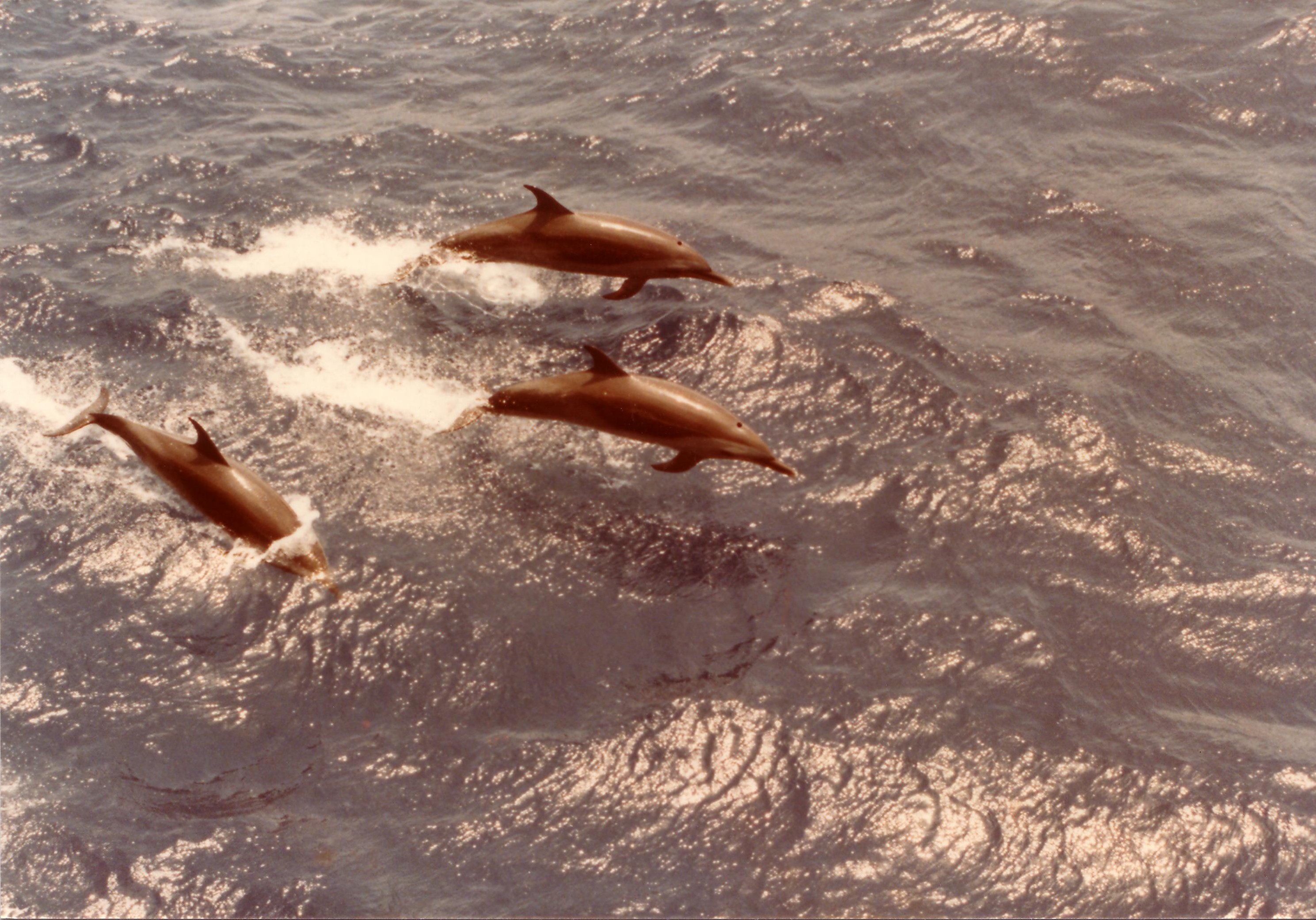|
Spotted Dolphin
Spotted dolphin refers to either one of two closely related dolphin species, being: * Atlantic spotted dolphin, ''Stenella frontalis'' * pantropical spotted dolphin, ''Stenella attenuata'' While the pantropical spotted dolphin can be found around the world's oceans where a tropical or subtropical climate exists, the Atlantic spotted dolphin can only be found in the Atlantic Ocean The Atlantic Ocean is the second-largest of the world's five oceans, with an area of about . It covers approximately 20% of Earth's surface and about 29% of its water surface area. It is known to separate the " Old World" of Africa, Europe .... {{Animal common name Oceanic dolphins ... [...More Info...] [...Related Items...] OR: [Wikipedia] [Google] [Baidu] |
Atlantic Spotted Dolphin
The Atlantic spotted dolphin (''Stenella frontalis'') is a dolphin found in warm temperate and tropical waters of the Atlantic Ocean. Older members of the species have a very distinctive spotted coloration all over their bodies. Taxonomy The Atlantic spotted dolphin was first described by Cuvier in 1828. Considerable variation in the physical form of individuals occurs in the species, and specialists have long been uncertain as to the correct taxonomic classification. Currently, just one species is recognised, but a large, particularly spotty variant commonly found near Florida quite possibly may be classified as a formal subspecies or indeed a species in its own right. Atlantic spotted dolphins in the Bahamas have been observed mating with bottlenose dolphins. Rich LeDuc has published data that suggest the Atlantic spotted dolphin may be more closely related to the bottlenose dolphins (genus ''Tursiops'') than to other members of the genus ''Stenella''. More recent studies in ... [...More Info...] [...Related Items...] OR: [Wikipedia] [Google] [Baidu] |
Pantropical Spotted Dolphin
The pantropical spotted dolphin (''Stenella attenuata'') is a species of dolphin found in all the world's temperate and tropical oceans. The species was beginning to come under threat due to the killing of millions of individuals in tuna purse seines. In the 1980s, the rise of "dolphin-friendly" tuna capture methods saved millions of the species in the eastern Pacific Ocean and it is now one of the most abundant dolphin species in the world. Taxonomy The species was first described by John Gray in 1846. Gray's initial analysis included the Atlantic spotted dolphin in this species. They are now regarded as separate. Both the genus and specific names come from Latin words meaning thin or thinning. Two subspecies of the pantropical spotted dolphin are recognized: :''S. a. attenuata'' or offshore pantropical spotted dolphin, found worldwide in tropical waters :''S. a. graffmani'' or coastal pantropical spotted dolphin, found in coastal waters in the eastern tropical Pacific Anoth ... [...More Info...] [...Related Items...] OR: [Wikipedia] [Google] [Baidu] |
Tropical
The tropics are the regions of Earth surrounding the Equator. They are defined in latitude by the Tropic of Cancer in the Northern Hemisphere at N and the Tropic of Capricorn in the Southern Hemisphere at S. The tropics are also referred to as the tropical zone and the torrid zone (see geographical zone). In terms of climate, the tropics receive sunlight that is more direct than the rest of Earth and are generally hotter and wetter as they aren't affected as much by the solar seasons. The word "tropical" sometimes refers to this sort of climate in the zone rather than to the geographical zone itself. The tropical zone includes deserts and snow-capped mountains, which are not tropical in the climatic sense. The tropics are distinguished from the other climatic and biomatic regions of Earth, which are the middle latitudes and the polar regions on either side of the equatorial zone. The tropics constitute 40% of Earth's surface area and contain 36% of Earth's landmass. , the ... [...More Info...] [...Related Items...] OR: [Wikipedia] [Google] [Baidu] |
Subtropical
The subtropical zones or subtropics are geographical zone, geographical and Köppen climate classification, climate zones to the Northern Hemisphere, north and Southern Hemisphere, south of the tropics. Geographically part of the Geographical zone#Temperate zones, temperate zones of both hemispheres, they cover the middle latitudes from to approximately 35° north and south. The horse latitudes lie within this range. Subtropical climates are often characterized by hot summers and mild winters with infrequent frost. Most subtropical climates fall into two basic types: humid subtropical climate, humid subtropical (Köppen climate classification, Koppen climate Cfa), where rainfall is often concentrated in the warmest months, for example list of regions of China, Southeast China and the Southeastern United States, and Mediterranean climate, dry summer or Mediterranean climate (Köppen climate classification, Koppen climate Csa/Csb), where seasonal rainfall is concentrated in the c ... [...More Info...] [...Related Items...] OR: [Wikipedia] [Google] [Baidu] |
Atlantic Ocean
The Atlantic Ocean is the second-largest of the world's five oceans, with an area of about . It covers approximately 20% of Earth's surface and about 29% of its water surface area. It is known to separate the " Old World" of Africa, Europe and Asia from the "New World" of the Americas in the European perception of the World. The Atlantic Ocean occupies an elongated, S-shaped basin extending longitudinally between Europe and Africa to the east, and North and South America to the west. As one component of the interconnected World Ocean, it is connected in the north to the Arctic Ocean, to the Pacific Ocean in the southwest, the Indian Ocean in the southeast, and the Southern Ocean in the south (other definitions describe the Atlantic as extending southward to Antarctica). The Atlantic Ocean is divided in two parts, by the Equatorial Counter Current, with the North(ern) Atlantic Ocean and the South(ern) Atlantic Ocean split at about 8°N. Scientific explorations of the A ... [...More Info...] [...Related Items...] OR: [Wikipedia] [Google] [Baidu] |



